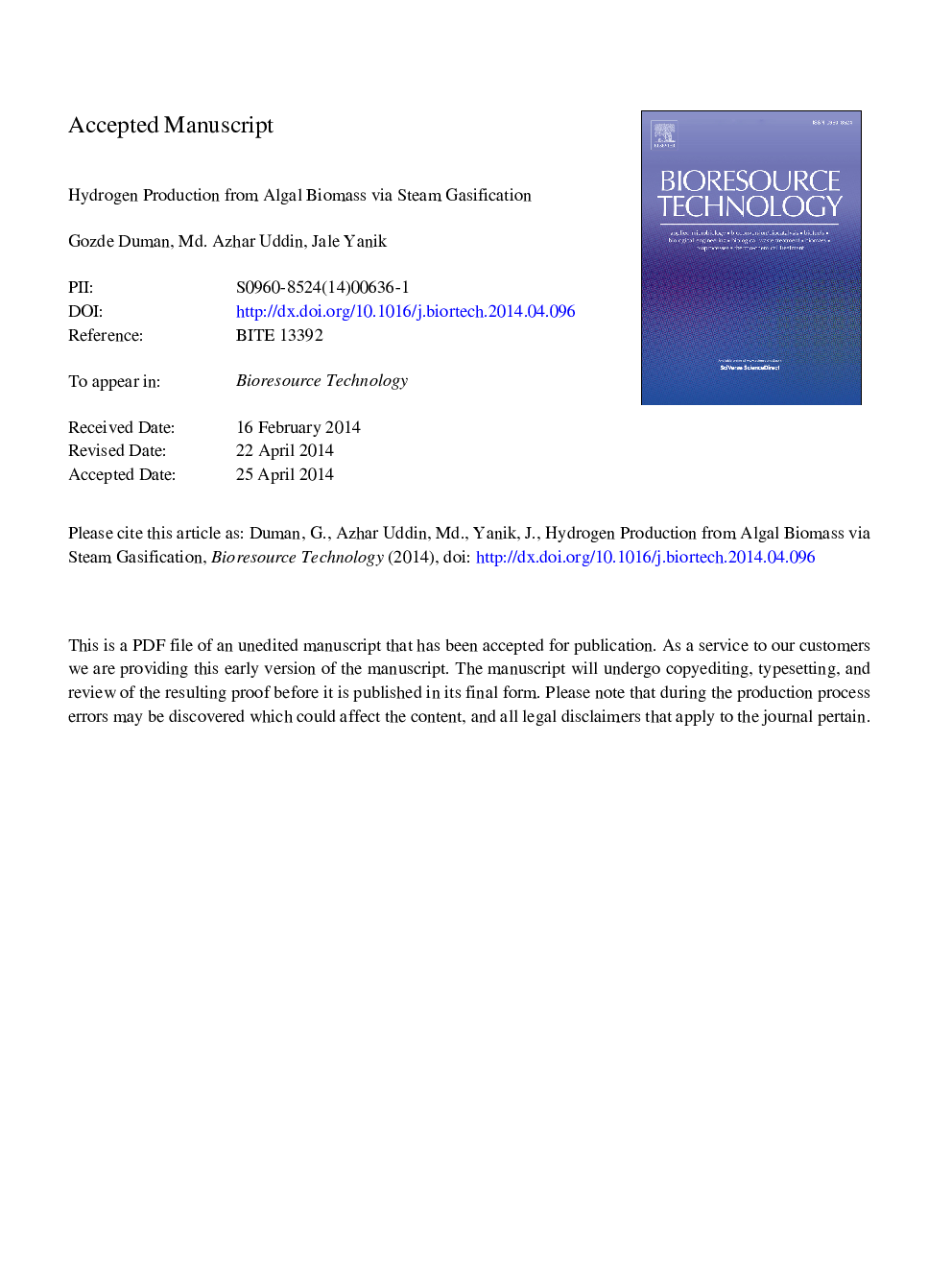| Article ID | Journal | Published Year | Pages | File Type |
|---|---|---|---|---|
| 7077066 | Bioresource Technology | 2014 | 32 Pages |
Abstract
Algal biomasses were tested as feedstock for steam gasification in a dual-bed microreactor in a two-stage process. Gasification experiments were carried out in absence and presence of catalyst. The catalysts used were 10% Fe2O3-90% CeO2 and red mud (activated and natural forms). Effects of catalysts on tar formation and gasification efficiencies were comparatively investigated. It was observed that the characteristic of algae gasification was dependent on its components and the catalysts used. The main role of the catalyst was reforming of the tar derived from algae pyrolysis, besides enhancing water gas shift reaction. The tar reduction levels were in the range of 80-100% for seaweeds and of 53-70% for microalgae. Fe2O3-CeO2 was found to be the most effective catalyst. The maximum hydrogen yields obtained were 1036Â cc/g algae for Fucus serratus, 937Â cc/g algae for Laminaria digitata and 413Â cc/g algae for Nannochloropsis oculata.
Related Topics
Physical Sciences and Engineering
Chemical Engineering
Process Chemistry and Technology
Authors
Gozde Duman, Md. Azhar Uddin, Jale Yanik,
